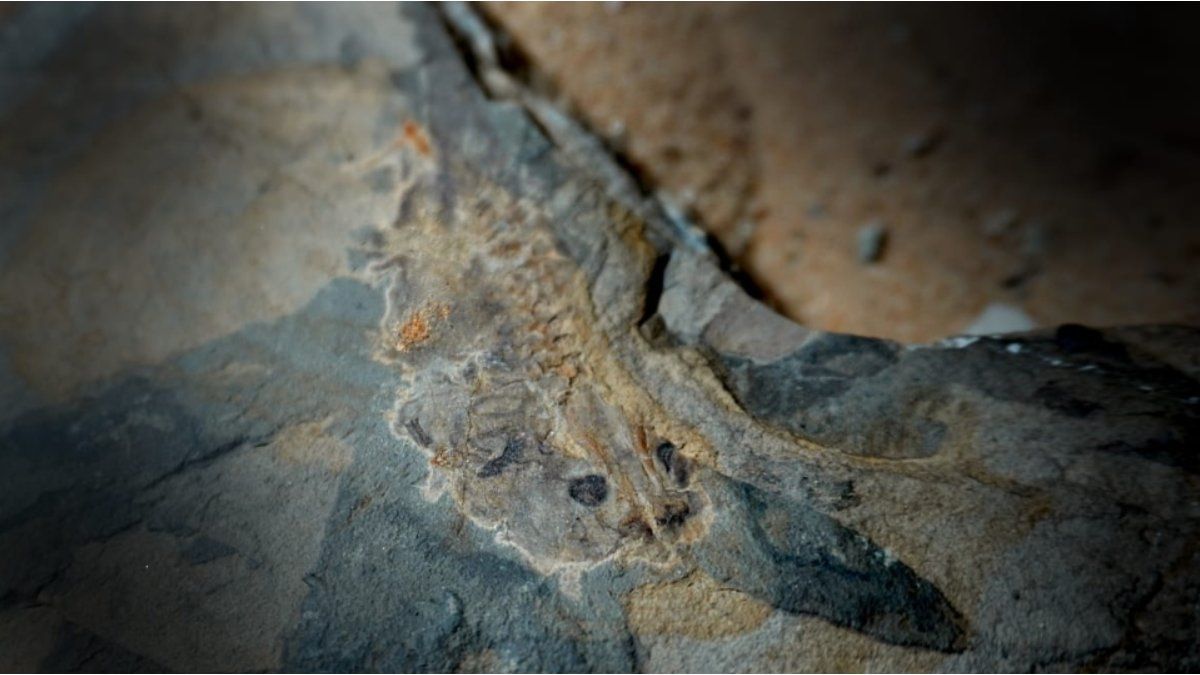A team of paleontologists from CONICET found the oldest fossil record of a tadpole of the species Notobatrachus degiustoi worldwide, about 100 kilometers from Desired Portpublished in the prestigious magazine Nature.
This species, a distant precursor of today’s frogs and toads, lived 165 million years during the Jurassic Period. They are animals of soft body and very little ossifiedknown for being the only vertebrates living things that undergo such extreme modifications in their morphology and ecology.
“To understand the evolution of the life cycle of anurans it is necessary the comprehensive study both the larval and adult phases,” said Dr. Mariana Chuliverresearcher at the Félix Azara Natural History Foundation and first author of the work.
CONICET tadpole.png
Adult fossil of Notobatrachus degiustoi.
CONICET
What are the characteristics of Notobatrachus degiustoi
This species was known in 1957 based on the description of numerous skeletons of well-preserved adult individuals that had been found in the province of Holy Crossexactly the same one where the CONICET team made the discovery.
They have great importance since retain primitive features which are currently not present in frogs and toads. After an exhaustive photogenetic analysis of amphibian larvae, the research located this tadpole very close to the group that includes all current anurans.
“What resulted from a big surprise was the great similarity that the new specimen has with some tadpoles that live today,” he said. Martin ExcurraCONICET researcher and author of the work, and added that the larval body shape of the anurans “suffered relatively few changes during the last 160 million years.
The conservation of the hyobranchial skeleton of the tadpole allowed us to confirm that it “fed filtrationtrapping food particles from the water, a mechanism executed by the continuous action of a mouth pump,” he explained Agustín Scanferlaauthor of the publication and CONICET researcher.
CONICET Matias Motta.png

Matías Motta, CONICET postdoctoral fellow, at the time of discovery.
CONICET
The surprising discovery
“Finding this fossil It was a unique experience in multiple senses, due to how unexpected some discoveries often are, when field work is carried out,” he expressed Matias MottaCONICET postdoctoral fellow who found the slab on which the remains of the tadpole were printed.
He discovery did not happen during the several days of excavation expeditions, but when in a rest Matías took a laja anyoneamong all the ones there were, and he noticed that he had bones and impressions on the rock
The expedition leaders in which the discovery occurred were: Fernando NovasCONICET researcher at the MACN, and Xu Xingfrom the Chinese Academy of Sciences. “There are many paleontological topics keys that can lay the foundation for extensive knowledge, such as the evolution and early appearance in the history of this particular method of growth and development that amphibians and particularly frogs have,” added Novas.
Source: Ambito
David William is a talented author who has made a name for himself in the world of writing. He is a professional author who writes on a wide range of topics, from general interest to opinion news. David is currently working as a writer at 24 hours worlds where he brings his unique perspective and in-depth research to his articles, making them both informative and engaging.




